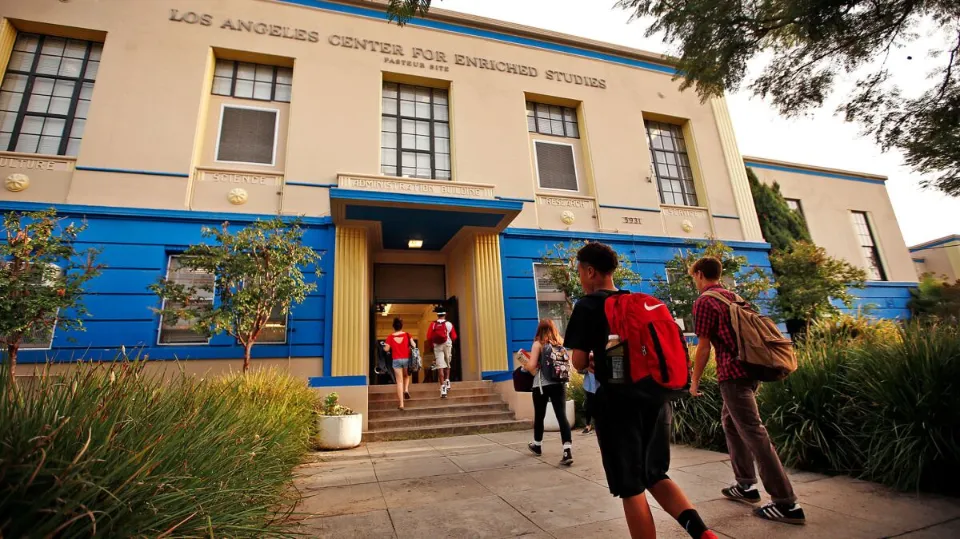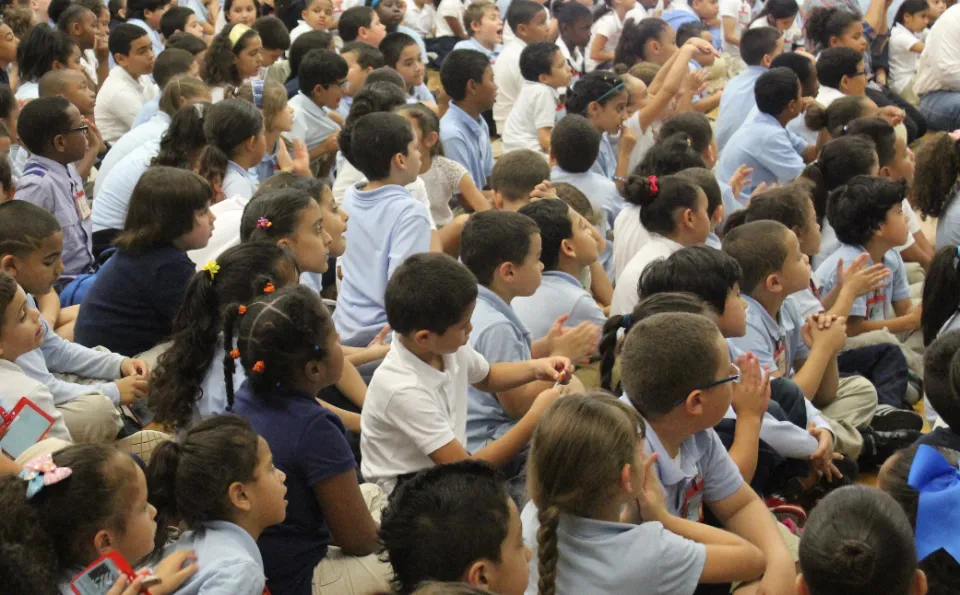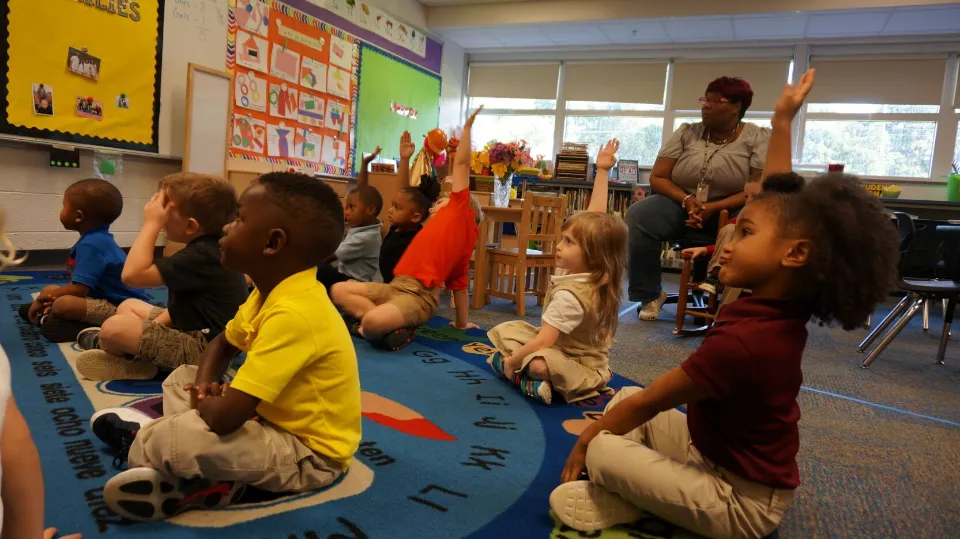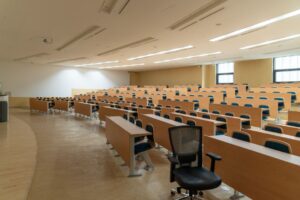
Why Magnet Schools Are Bad? Pros & Cons
This article will help you better understand what magnet schools are and why magnet schools are bad.
The specific curriculum focuses are common in magnet schools, including STEM (Science, Technology, Engineering, and Math), the arts, and professional or career paths.
But why are magnet schools bad? The main pros and cons of a magnet school will be covered.
Why Magnet Schools Are Bad?
Consider the difficulties educators faced 30 or 40 years ago: Why weren’t intelligent students being challenged? Academically under-prepared kids, most of them ethnic minorities, moving in and test scores going down? It’s completely logical that they chose a path to create magnet schools. However, it was a band-aid that had unfavorable long-term effects.
Here are the cons of magnet schools:
- Teachers Work Long Hours
- The Admission Process is Selective
- Friendship Challenges
- Narrowing of a Curriculum
- Long Bus Rides
- Have Similar Costs to Private Schools
- Have Fewer Extracurricular Activities
- Attending After-school Activities is a Challenge
- Underrepresentation of Students With Special Needs and Non-native English Speakers
- Transfer of Bright Students from Public Schools
- Some Magnet Schools Do Not Provide Transportation
- Have Strict Policies
- High Demand for Magnet Schools
- Some Magnet Schools Cheat to Get More Grant
- Magnet Schools Give a Large Number of Assignments
- Public Schools Students Have Few Opportunities of Joining the Best Colleges
Teachers Work Long Hours
In comparison to other teachers, those who work in public schools put in a lot of hours. Due to the requirement that they pay attention to every student, their work is even more difficult. Given the extent of their work, a summer break and a few weeks of vacation would not be sufficient. These teachers were hired under contract; if they violate it by putting in more hours or leaving for better jobs, the school may bring legal action.
The Admission Process is Selective

Only the brightest and best students are admitted to these schools. A student must have no disciplinary issues, have a good attendance record, and achieve high grades to stand a chance to be enrolled in these schools. Thus, getting admitted may be challenging for good, average, and even below-average students.
Friendship Challenges
Due to the lengthy commutes, students must make to and from school, they become estranged from their neighborhood friends. Because they live far away, it becomes difficult to keep up with the new friends they make in school. Group study sessions and game nights are becoming more difficult because of them.
You may want to know What Are Blue Ribbon Schools?
Narrowing of a Curriculum
Narrowing a curriculum at a young age does not necessarily benefit all students. Those who have grown passionate or interested in a certain thing at a young age are the ones who gain. Others lack enthusiasm or interest when they are younger. Magnetizing these students’ education is more detrimental than beneficial. We should give them space to explore who they are and identify their interests and passions.
Long Bus Rides
The students’ homes are located a great distance from many of these schools. In order to get to and from school, students must endure lengthy bus rides of more than an hour. Particularly in the first year of enrollment, bus rides can be isolating. Young students may also need to be picked up from the bus stop by their parents because it may be far from home.
Have Similar Costs to Private Schools
Taxpayer monies subsidize a magnet school’s cost, yet the cost is similar to a private school. They cost 10% more than the typical public school. The education trust fund for the children of parents who wish to enroll them in magnet schools must be adequately funded.

Have Fewer Extracurricular Activities
These schools offer fewer extracurricular activities than the many that are offered by public schools. To provide professional base-practice education to their students, their programs are specialized. Additionally, in these schools, extracurricular activities receive more time than academic activities, and time is not distributed equally among activities. There are consequently fewer extracurricular activities at the majority of these schools.
Attending After-school Activities is a Challenge
There are obstacles to attending after-school activities, such as the insufficient bus service and the lengthy travel time between home and school. Parents might be required to pick up their kids from these events and drive a long way back home. Due to transportation issues, students might miss out on school events like dances, concerts, and sporting competitions.
Underrepresentation of Students With Special Needs and Non-native English Speakers
The majority of these schools underrepresent students with special needs. One or no students with special needs may attend a given school. Almost all of their programs are made to accommodate students who are not physically challenged. They also have a few non-native English speakers among their student body.
Because of the language of instruction, the majority of these schools favor native English speakers. Students who are native English speakers are finding it simpler to comprehend and adjust to the school program.
Transfer of Bright Students from Public Schools

Causing an overall imbalance of students in public school classes. A public school class typically includes high achievers along with average and below-average students. Because magnet schools draw gifted students from nearby public schools, there is a decline in high achievers in public schools.
Some Magnet Schools Do Not Provide Transportation
Since these schools are far from the homes of the students, having transportation is essential. Due to their limited geographic coverage, magnet schools do not offer busing or transportation. Alternative forms of transportation must be sought by parents for their kids.
Have Strict Policies
In case of disciplinary issues, a student may be expelled. There is no room for indiscipline in magnet schools. It might be a good idea for a parent to move her child to a different school if she is having financial issues. The costs of these schools are high and are similar to having your child in a private school.
High Demand for Magnet Schools
They are increasing the demand for magnet schools beyond the capacity for enrollment. Many parents prefer their children to attend a magnet school, not a regular public school. As a result, many students are stuck in their zoned regular public schools and never get to experience what a magnet school is like.
Some Magnet Schools Cheat to Get More Grant
Some magnet schools raise their test scores by recruiting talented and gifted students from public schools while denying enrollment to students with lower grades. Because grants in some districts are awarded based on performance, doing this puts the magnet school in a better position.

The best students will leave public schools, resulting in a decrease in grants. The school will eventually have to cut back on its offerings, which will result in a lower standard of instruction.
Magnet Schools Give a Large Number of Assignments
Magnet schools give many assignments that deny students time to hang out, play or have a part-time job. Students sometimes feel stressed and overburdened by the sheer volume of their assignments.
Furthermore, if they wait until the last minute to begin their assignments, students will feel a lot of stress. By making sure they complete their assignments on time, students can only protect themselves from academic stress.
Public Schools Students Have Few Opportunities of Joining the Best Colleges
Compared to public schools, the top colleges favor magnet school graduates. Compared to regular public schools, students from magnet schools have a higher success rate of graduating from college. As a result, magnet school students are given more opportunities at these top universities. Only a small percentage of students from public schools enroll in the best colleges; most attend regular and middle colleges.
Here is more information about private schools:
- Effective Strategies to Increase Enrollment in Private Schools
- Private School Vs Charter School: How Are They Different?
Pros of Magnet Schools
- Have a smaller class size
- The curriculum is based on student interests and passions
- The learning environment is diverse
- It encourages parental involvement
- Well-equipped classrooms and facilities
- Higher salaries for educators
- Have fewer discipline cases
- Community and family partnerships are highly encouraged
- Academic excellence
- Offers online programs
- Specialized programs
- Gets more funds
- Gives a higher chance of joining a college
- Students become better at managing time
- Employers prefer magnet school students
- Students achieve the highest level of academic success
What is a Magnet School?

Unlike charter schools or private schools, a magnet school is part of the local public school system. In regular public schools, students are typically assigned to the school that is closest to where they live based on the location of their home. This may not always be the case, though, as some smaller towns lack any kind of school zoning and boundaries can appear arbitrary.
But, magnet schools exist outside of zoned school boundaries. Magnet schools continue to be a part of the public school system and are run by the same administration and school board, in contrast to private schools, which are entirely independent of local public school districts, and charter schools, which are public schools with private oversight.
Is a Magnet School Right for Your Family?
This all really depends on the following factors:
- Are you looking for a different curriculum or teaching style from what your kids would receive at their zoned public school?
- Do you believe that a magnet school would be able to better serve your children’s needs than their zoned public school?
- How do you feel about sending your children to a school outside of your normal school zone? In light of this, how well do you anticipate your child adjusting to a new school?
- What are your thoughts on the diversity of students?
- What are your thoughts on student achievement?
It’s not an instantaneous or simple choice to send your child to a magnet school. Probably the best way to make this decision is to prioritize your goals and focus on them that way. What are your goals? Are they to:
- Place your child in a more racially or ethnically diverse student population.
- Put your kid in a school where their academic growth should outpace what they would achieve at their designated school.
- Put your kid in a classroom with a particular curriculum or teaching approach.
It should be simpler for you to examine individual magnet schools and determine which, if any, are best for your family once you have determined why you want your child to participate in a magnet school program.

Public Schools
Public schools are those that are free, tax-funded, and governed by the local government.
Pros
- Provides free transportation
- Offers afterschool programs
- Teachers are state certified & are more likely to have a master’s degree than private school teachers
- Schools are state accredited
- Provides a variety of extra-curricular activities
- Your child’s classmates will live close by
- Offers special education services
- Free to families (aside from occasional field trips or supply fees)
Cons
- School zone regulations can be strict, giving families few transfer options
- Maybe underfunded, causing program cuts or inadequate school supplies
- Prone to large class sizes
- Heavily focused on standardized testing – an incomplete and sometimes biased indicator of a child’s abilities
- Classes geared toward average abilities, often overlook both gifted and struggling students
- Kids may be exposed to behaviors or practices inconsistent with their family’s values, such as early sex education

Private Schools
Definition: As opposed to public schools, private institutions manage and finance their operations.
Pros
- Smaller class sizes, create more individualized attention
- The curriculum is often more challenging
- High-quality learning supplies, technology, and materials
- Students tend to score higher on standardized tests
- Higher graduation rates than public schools
- Minority students at private schools are more likely to attend college
- Some offer religious education, an important priority to many families
- Often provides personalized college counseling programs
- Campuses are generally safer due to selective screening processes
Cons
- High tuition costs
- Teaching certificates are not required for teachers
- State accreditation is optional (though many private schools electively seek it)
- The less diverse student body can make students less prepared for diversity in the workforce
- Not required to offer special education services (though some choose to)
- Difficult and competitive admission processes
- If a parent enrolls their child in private school due to behavior or alcohol/drug problems, it often worsens their problem
- Some of the pros, such as higher graduation rates, may be due to the selective admission process, rather than superior academics
Conclusion: Why Magnet Schools Are Bad?
Magnet schools have a lot of benefits and drawbacks. These advantages and disadvantages cover a variety of topics, some of which are related to specific experiences at magnet schools, while others are more philosophical or theoretical in nature.
We hope this post has given you a better understanding of magnet schools.
FAQs
What is the Hardest Magnet School to Get Into?
The Los Angeles Center for Enriched Studies is one of the most difficult magnet schools to get into.
What Are the 3 Most Common Themes in Magnet Sch
Common magnet school themes are science, technology, engineering, and math, also called The report on magnet schools lists STEM as well as performing arts, International Baccalaureate, gifted and talented, and foreign languages.


